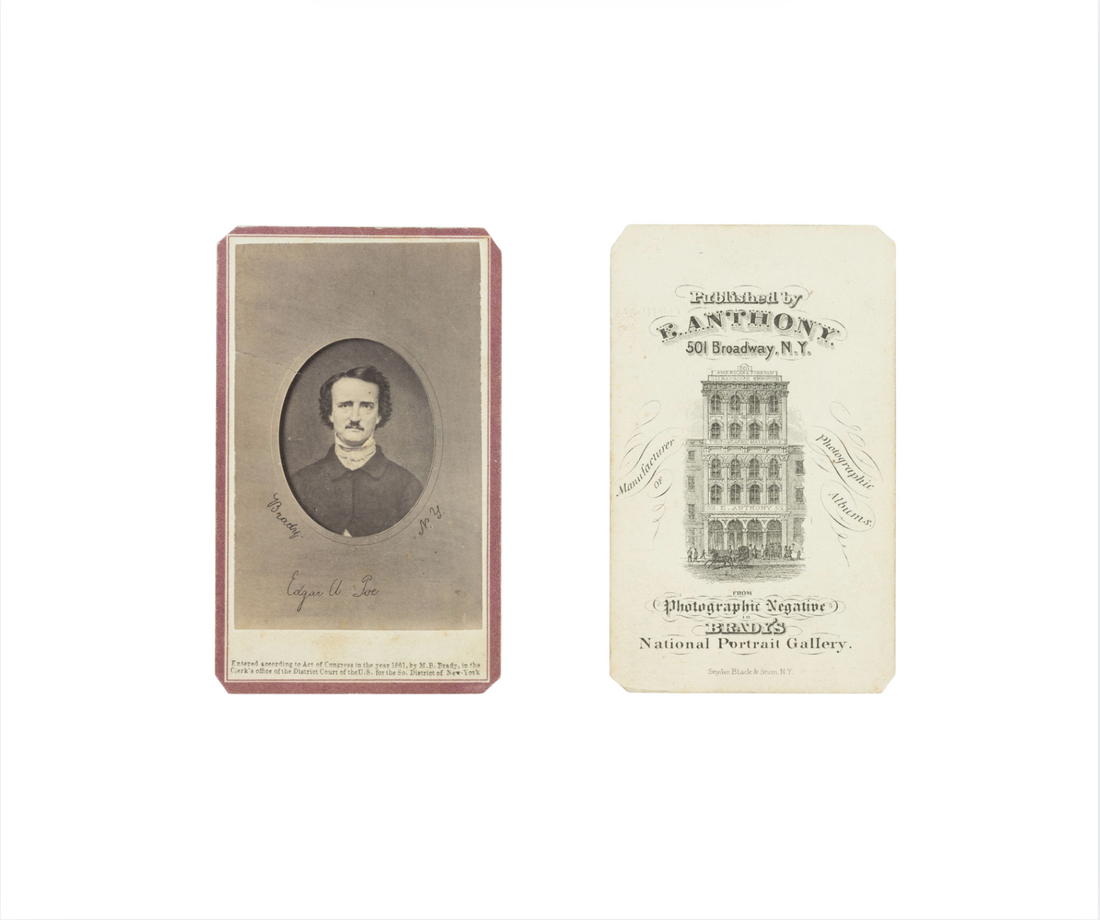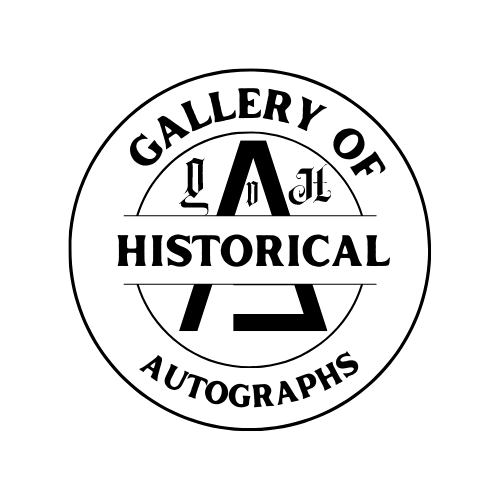
The Haunting Legacy of Edgar Allan Poe: A Rare Brady CDV Emerges from the Shadows
Share

Edgar Allan Poe remains one of the most elusive and desirable figures in the world of historical collecting. A recently surfaced circa 1861 carte de visite (CDV) photograph of Poe, produced from the original Mathew Brady negative and published by E. Anthony of New York, offers a striking and unusually clear portrait of the legendary writer.
The CDV measures 4 inches by 2½ inches and features a bust length oval format image of Poe, with his name “Edgar A. Poe” printed below, along with the inscriptions “Brady” and “N.Y.” within the photographic plate. At the bottom margin of the card is the line
"Entered according to Act of Congress in the year 1861, by M.B. Brady, in the Clerk's office of the District Court of the U.S. for the So. District of New York.”

The reverse features the publisher’s imprint "Published by E. Anthony, 501 Broadway, N.Y." with an engraved image of the Anthony studio and the statement "From Photographic Negative in Brady’s National Portrait Gallery" This image originates from one of the final daguerreotypes of Poe taken during his life and was widely reproduced in the 1860s as part of Brady’s effort to document notable American figures.
Poe's Life and Cultural Impact

Edgar Allen Poe by Michael Volpicelli
Edgar Allan Poe 1809 to 1849 played a defining role in shaping American literature. He is credited with inventing the detective fiction genre, elevating Gothic horror, and developing the short story into a respected literary form. His works such as The Raven, The Tell Tale Heart, The Fall of the House of Usher, and The Cask of Amontillado are considered foundational texts.
Poe’s life was marked by poverty, instability, and personal loss. He struggled with alcoholism, suffered the early death of his wife Virginia Clemm, and died under mysterious circumstances at the age of 40. Despite these challenges, his influence on global literature is profound. Writers as varied as Charles Baudelaire, H.P. Lovecraft, and Jorge Luis Borges drew on Poe’s aesthetic and psychological depth.
By the time this CDV was issued in 1861, Poe had already become a posthumous icon. His reputation only grew in the years following his death, cementing him as one of America’s most mythologized literary figures.
Collectability and Market Rarity
In the manuscript and autograph market, Poe ranks among the rarest and most valuable American literary signatures. Fewer than 100 known authentic Poe autographs are documented, and most are housed in institutional collections. His handwritten material commands premium prices, often in the high five to seven figures.
Even unsigned material tied to Poe, especially early photographic images like this CDV, is considered highly collectible. This specific example is one of the finest known, distinguished by its vivid albumen contrast, crisp printing, and intact mount. Most extant examples are heavily faded, creased, or suffer from uneven toning.

Only one example of this CDV has appeared at a major public auction in recent memory. In 2017, University Archives sold an inferior copy with duller tones and visible wear which realized $4,375 including the 25% buyers premium which is not accounted for in the result above. The current example offers stronger visual clarity, superior preservation, and a sharper mount, placing it among the best surviving examples of this historically important portrait.
Position in Photographic and Literary History
The image, likely taken around 1848, a year before Poe's death, became one of the standard visual references for posthumous representations of Poe and was adopted by Mathew Brady, arguably the most significant American photographer of the 19th century, as part of his National Portrait Gallery initiative.

Brady's National Portrait Gallery was an ambitious undertaking that aimed to document the most prominent American figures of the era through photography. First announced in the 1850s, it featured statesmen, authors, generals, and other luminaries, offering the American public an unprecedented visual record of their cultural heroes. The gallery was not a formal institution but rather a rotating exhibition and publishing effort, composed of original portraits and mass-produced photographic prints. By including Poe in this series, Brady solidified his place not only in American literary history but also in the emerging visual culture of the 19th century.
The publisher Edward Anthony was one of Brady’s key commercial partners. His studio at 501 Broadway was among the most prolific outlets for photographic prints, particularly CDVs, during the Civil War era. The presence of both Brady’s and Anthony’s names on this piece confirms its place in the golden age of early American portrait photography.
Conclusion
This rare CDV offers collectors a direct link to Edgar Allan Poe at a time when his cultural legacy was beginning to take permanent root. Few 19th century American authors command this level of reverence across literary, academic, and collector communities. Poe’s profound influence, paired with the extreme scarcity of original materials related to him, ensures lasting demand for authentic visual representations of his likeness.
Have a rare Literary, Edgar Allan Poe item or 19th-century photograph that you are looking to sell?
Sell to us! The Historical Autographs Gallery is always actively buying exceptional literary and early photographic material.
